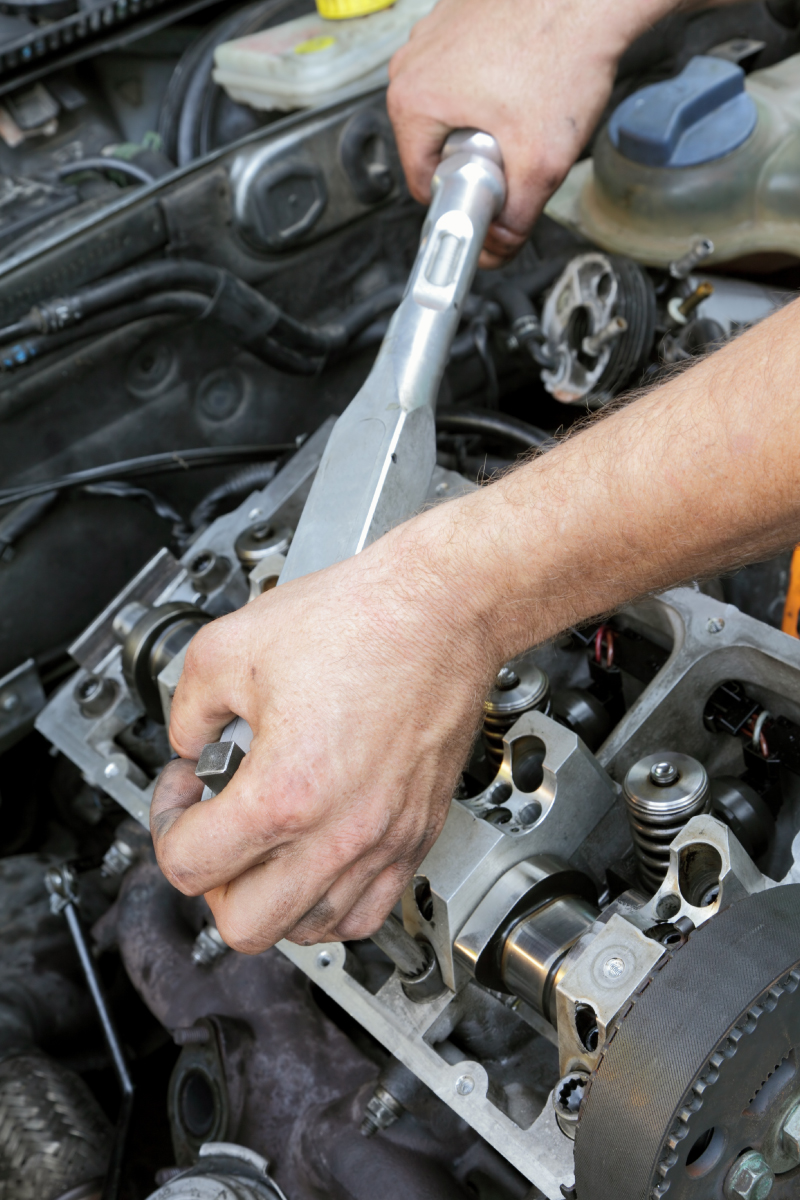Cambelt Specialists in Cranbrook
Cambelt specialists providing all aspects of cambelt services such as repairs and replacements throughout Cranbrook and Sissinghurst areas.
Does my cambelt need replacing?
In most cases a cambelt should be replaced between 40,000 miles and up to 100,000 miles or from four years up to around six years. If you book a service with Cranbrook Cars we can determine the right time when your cambelt should be replaced.
Costs of cambelt repairs / replacements
If you are looking to have your cambelt replaced the costs can vary depending on the vehicle and who you choose to make the replacement. Replacing a broken timing belt can cost up to £1500 or more because the cambelt can also cause problems to other parts such as valves, pistons and water pumps.
Does my car have a cambelt? its a diesel?
We cannot talk about every diesel engine out there but there a large majority of them have timing chains, some examples are:
- BMW
- Mercedes
- Honda
- KIA
What are the signs of a bad cambelt / timing belt?
Some of the ways you will notice your timing belt is about to go are:
- Engine misfires
- Engine smoke
- Bad oil pressure
- Broken pistons and / or valves
- Bad idling of the engine
What happens if the cambelt / timing chain breaks?
If your timing belt snaps it can cause issues with other parts of the vehicle, it is possible no other damage to components in your vehicle are affected but sometimes they can run into each other causing bent valves, cylinder head or camshaft damage and piston / cylinder damage.
Can I drive with a bad timing belt?
If your vehicles cambelt / timing chain is worn you could possible cause catastrophic engine damage. A worn timing belt could impact the engine's fire rate.
If you have more questions about cambelts / timing chains or just want to get the job done and get back on the round, please get in touch with Cranbrook Cars. We have specialists ready and waiting to carryout the work and get you back on the road.
Here's a list of frequently asked questions (FAQs) about cambelts:
What is a cambelt?
A cambelt, also known as a timing belt, is a critical component of the engine that controls the timing and synchronization of the engine's internal components, such as the crankshaft and camshaft.
Why is it important to replace the cambelt?
The cambelt is subject to wear and tear over time. If it fails or breaks, it can cause severe engine damage, leading to costly repairs. Replacing the cambelt at the manufacturer-recommended intervals helps ensure the smooth and safe operation of your vehicle.
When should I replace the cambelt?
The replacement interval for cambelts varies depending on the vehicle's make, model, and engine type. It is generally recommended to replace the cambelt every 60,000 to 100,000 miles or as specified in your vehicle's maintenance schedule. Consult your vehicle's manual or contact a qualified mechanic for the recommended replacement interval for your specific vehicle.
What are the signs that my cambelt needs replacing?
Some common signs that indicate a worn or failing cambelt include engine misfires, difficulty starting the engine, engine vibration, unusual noise coming from the engine, and visible wear or cracks on the cambelt itself. If you notice any of these signs, it's important to have your cambelt inspected and replaced if necessary.
What happens if the cambelt breaks?
If the cambelt breaks while the engine is running, it can cause significant damage to the engine's valves, pistons, and other internal components. In some cases, the engine may completely fail, requiring extensive repairs or even engine replacement. Regular cambelt replacement helps prevent such catastrophic failures.
Can I replace the cambelt myself?
Cambelt replacement is a complex and precise procedure that requires specialized knowledge and tools. It is highly recommended to have the cambelt replacement done by a qualified mechanic or technician who has experience in working with your specific vehicle make and model.
What is included in a cambelt replacement service?
A cambelt replacement service typically includes removing the old cambelt, inspecting the tensioner and other related components, replacing the cambelt with a new one, and ensuring proper tension and alignment. Additionally, it may involve replacing other components such as the cambelt tensioner, water pump, and idler pulleys, depending on the vehicle manufacturer's recommendations.
Is it necessary to replace other components during cambelt replacement?
In many cases, it is recommended to replace other components such as the cambelt tensioner, water pump, and idler pulleys while replacing the cambelt. These components often have similar wear patterns and are located in the same area, so it's more cost-effective to replace them simultaneously to avoid future issues and additional labor costs.
Can I delay cambelt replacement if my mileage is low?
It's important to follow the manufacturer's recommended cambelt replacement interval regardless of mileage. Cambelts deteriorate over time due to factors such as age, heat, and exposure to contaminants, not just mileage. Neglecting cambelt replacement based solely on low mileage can lead to unexpected failures and costly engine damage.
How can I schedule a cambelt replacement service?
To schedule a cambelt replacement service, contact a trusted automotive service provider or your vehicle dealership. They will help you determine the appropriate replacement interval for your vehicle and schedule a service appointment at your convenience.
Remember to consult your vehicle's manual or seek professional advice for specific recommendations regarding cambelt replacement intervals and procedures for your particular vehicle.

